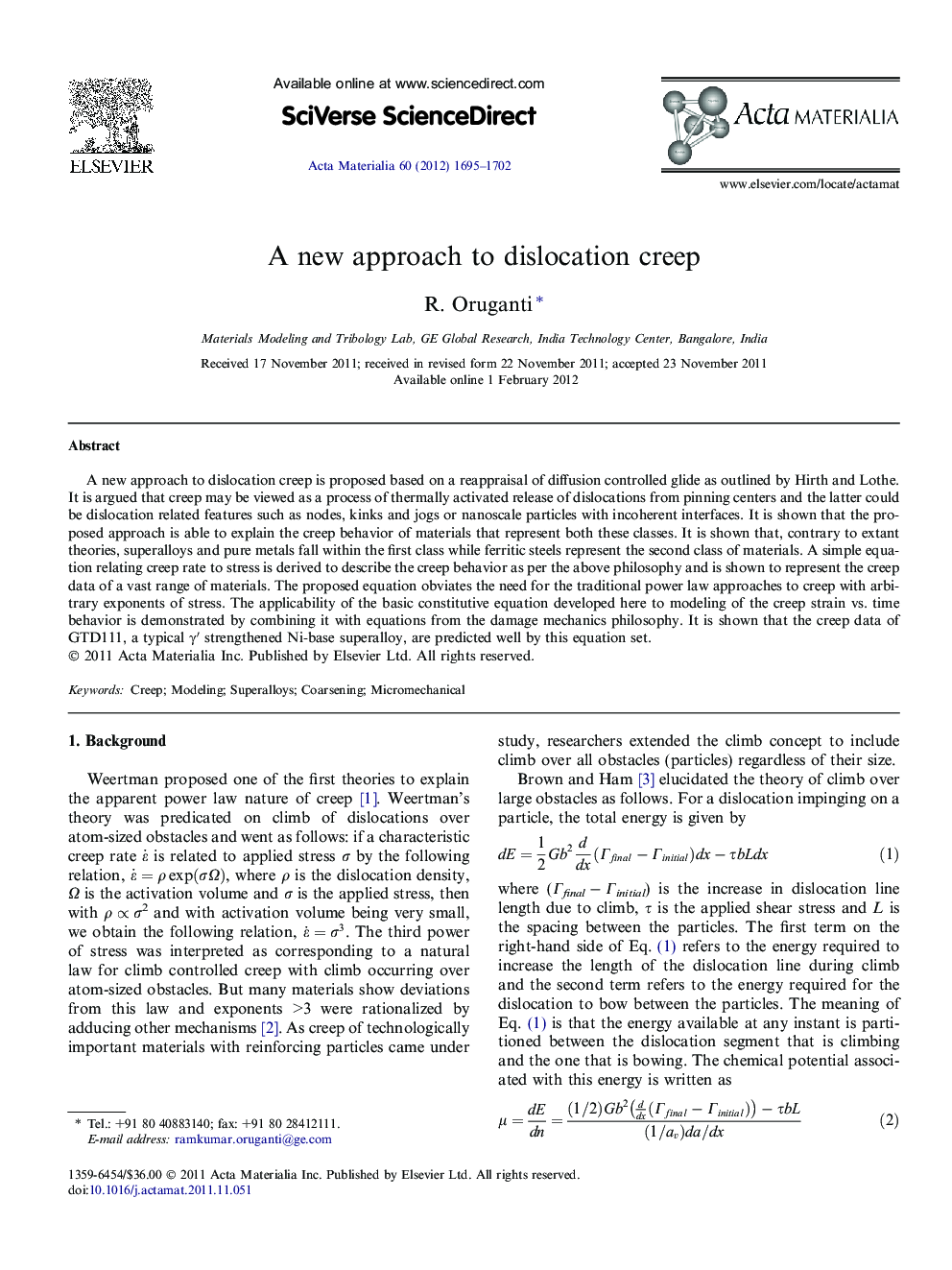| Article ID | Journal | Published Year | Pages | File Type |
|---|---|---|---|---|
| 1446827 | Acta Materialia | 2012 | 8 Pages |
A new approach to dislocation creep is proposed based on a reappraisal of diffusion controlled glide as outlined by Hirth and Lothe. It is argued that creep may be viewed as a process of thermally activated release of dislocations from pinning centers and the latter could be dislocation related features such as nodes, kinks and jogs or nanoscale particles with incoherent interfaces. It is shown that the proposed approach is able to explain the creep behavior of materials that represent both these classes. It is shown that, contrary to extant theories, superalloys and pure metals fall within the first class while ferritic steels represent the second class of materials. A simple equation relating creep rate to stress is derived to describe the creep behavior as per the above philosophy and is shown to represent the creep data of a vast range of materials. The proposed equation obviates the need for the traditional power law approaches to creep with arbitrary exponents of stress. The applicability of the basic constitutive equation developed here to modeling of the creep strain vs. time behavior is demonstrated by combining it with equations from the damage mechanics philosophy. It is shown that the creep data of GTD111, a typical γ′ strengthened Ni-base superalloy, are predicted well by this equation set.
